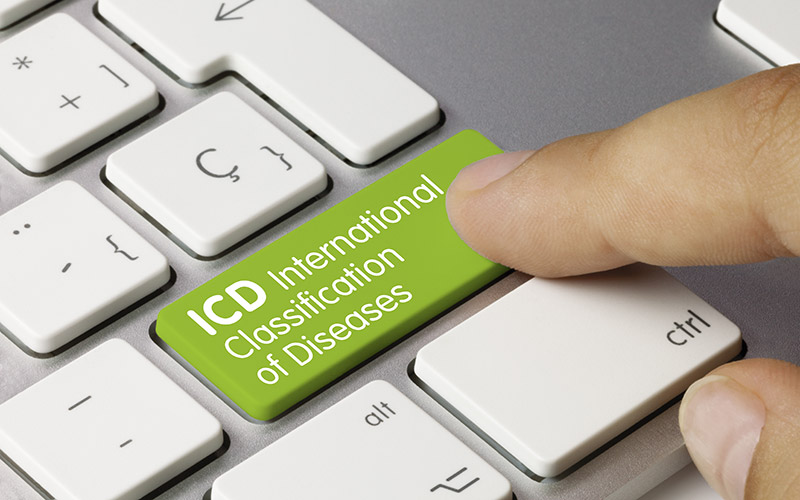January 25, 2021
It's simple, you go to the doctor or go into the hospital, they determine what ails you (make a diagnosis), do something (perform a procedure) and bill your insurer, and/or you.
 Keeping Track of Diagnoses, Care and Costs
Keeping Track of Diagnoses, Care and Costs
To keep all the diagnoses and procedures straight, the World Health Organization created the International Classification of Diseases Clinical Modification (ICD-CM) coding system. The system provides standardized diagnosis codes across the healthcare industry to make it easy for any provider or insurance company to recognize a client's diagnosis, and is a necessary part of getting insurance companies to pay for certain treatments.
140,000 Codes and Counting
The U.S. healthcare system started using ICD-CMs in 1999. Since then there have been 10 major revisions to the codes, plus a host of minor ones made annually. The 10th revision (ICD10-CM), which went into effect in the United States in 2015, includes 5 times as many diagnoses codes (69,000) and almost 20 times as many procedure codes (70,000) as the prior version.
It's not just that there are more classes of diagnoses being added or removed (they actually remove some) or that there are so many more procedures, it's that the diagnoses or the procedures are defined with greater specificity in each new version.
The most recent annual update was released in Fall 2020 for all services performed between October 2020, and through September 2021. It included the following:
- 490 diagnosis codes added, including new codes for alcohol and narcotic use disorders, fentanyl poisoning, vaping use disorders, accidents involving electric scooters, and COVID-19.
- 58 codes deleted, including poisoning from synthetic narcotics. These deleted codes will be replaced by new ones. For example, code R51 (headache) has been deleted and replaced by newer and more specific codes.
- 47 codes revised, including updated descriptions for Z68.XX codes about adult body mass index (BMI) and Z88.X codes about allergies.
Too Much Room for Error
With 140,000 codes and annual changes, errors get made.
 Code – DRG Mismatch Errors
Code – DRG Mismatch Errors
Sometimes the DRGs on a facility claim are inconsistent with the diagnostic and procedure codes on the claim. Claim level errors happen on about 4-6% of claims, but, when they do, they can be costly.
EXAMPLE: The coder for a hospital chose DRG-270 (Other Major Cardiovascular Procedures with major complications and comorbidity) on a claim. Based on the diagnostic and procedure codes on the claim, 872 (Septicemia or severe sepsis w mechanical ventilation for 96+ hours) is the correct DRG.
If the hospital had paid based on the DRG on the claim, it would have received $30,189.89. However, applying the correct DRG (872), the hospital was paid only $6,841.77, saving the payor $23,347.92.
Incorrect Code Errors
Sometimes a coder chooses diagnostic or procedure codes that are not appropriate based on the medical records. These errors happen on 10-15% of claims, and they, too, can have a major impact on how much the insurer pays the provider.
EXAMPLE: A 53-year-old man with no significant past medical history presented with abdominal pain and a fever when he went to the emergency room. A CT of his abdomen showed a dilated appendix with marked surrounding inflammation. The DRG on the claim was 853. However, the coder incorrectly entered the diagnostic code for acute appendicitis with generalized peritonitis when they should have entered the code for acute appendicitis with other specified diseases of the appendix.
The resulting change to the DRG 795 from DRG 853 on the claim reduced the payment to the hospital by $79,681.50.
With a lot of dollars at stake, it's essential to have a company, like H.H.C Group, review your claims to ensure their accuracy, supply clear explanations of the reasons the DRGs and payment amounts have been changed, and provide support when providers challenge the changes.
Contact Us Today, to see how much we can save you.

